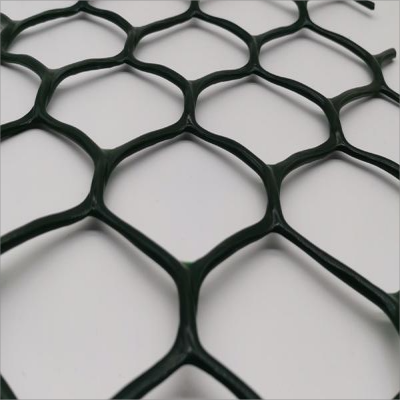1. Construction preparation
1、Material preparation: According to the design requirements, prepare sufficient quantity and qualified quality of three-dimensional geonets. Also check the quality documentation of the material to ensure it meets the relevant standards and specifications.
2、Site cleaning: Level and clean the construction site, remove sundries, stones, etc., and ensure that the construction surface is flat and solid without sharp objects, so as not to damage the geonet.
3、Equipment preparation: Prepare the mechanical equipment needed for construction, such as excavators, road rollers, cutting machines, etc., and ensure that it performs well and meets the construction requirements.
2. Measurement and payout
1、Determine the scope of construction: According to the design drawings, use measuring instruments to determine the laying scope and boundary of the 3D geonet.
2、Pay-off marking: Release the edge line of geonet laying on the construction surface, and mark it with markers for subsequent construction.
3. Geonet laying
1、Expand geonet: Expand the three-dimensional geonet according to the design requirements to avoid damage to the geonet during the deployment process.
2、Laying positioning: Lay the geonet in the predetermined position according to the payout mark to ensure that the geonet is flat, wrinkle-free and closely fits the ground.
3、Overlap treatment: The parts that need to be overlap should be overlap according to the design requirements, and the width of the overlap should meet the requirements of the specification, and special connectors or adhesives should be used to fix it to ensure that the overlap is firm and reliable.
4. Fixation and compaction
1、Edge fixation: Use U Type nails or anchors hold the edge of the geonet to the ground and prevent it from shifting.
2、Intermediate fixation: In the middle position of the geonet, set fixed points according to actual needs to ensure that the geonet remains stable during construction.
3、Compaction treatment: Use a road roller or manual way to compact the geonet to make it fully contact with the ground and improve the stability and load-bearing capacity of the geonet.
5. Backfilling and covering
1、Selection of backfill materials: According to the design requirements, select appropriate backfill materials, such as sand, crushed stone, etc.
2、Layered backfill: Lay the backfill materials on the geonet in layers. The thickness of each layer should not be too large, and use compaction equipment for compaction to ensure the compactness of the backfill materials.
3、Cover protection: After backfilling is completed, cover and protect the geonet as needed to prevent it from being damaged by external factors.
VI. Quality inspection and acceptance
1、Quality inspection: During the construction process, the laying quality of the geonet is regularly inspected, including the flatness of the geonet, the firmness of the overlap, and the compaction degree.
2、Acceptance criteria: Check and accept the geonet construction according to relevant standards and specifications to ensure that the project quality meets the requirements.
Post time: Apr-03-2025




